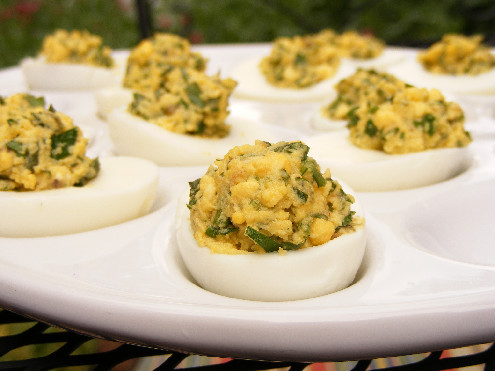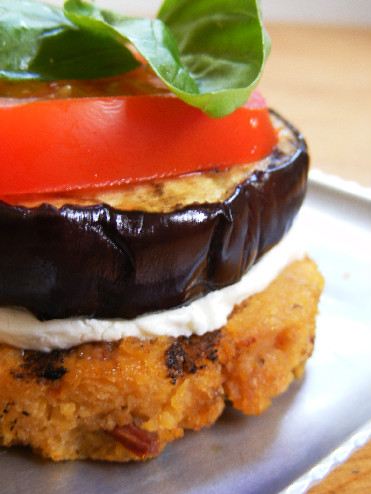Zucchini Balsamella – Zucchini Bechamel
Tuesday, August 24th, 2010My garden runneth over with zucchini. I know. I’m not alone.
About this time of year the excitement in finding one or several zucchini beneath a canopy of green begins to wear thin. If you’re like some of my gardening friends you take the easy way out and give most of them to friends and neighbors.
Yes, it’s nice to share. But, don’t do it because you’re uninspired. When I first started this blog I posted two excellent recipes for zucchini:
– Calabacitas con elote – a Mexican zucchini and corn succotash
– Kabak mucveri – Turkish zucchini fritters
And, because I’m a zucchini aficionado, I have a few more recipes coming your way, including this one for zucchini béchamel.
If you’re unfamiliar, not to worry, béchamel is a white sauce made out of a simple roux of butter, flour and milk. It is considered one of the mother sauces of French cuisine. So, when I came upon a recipe for Tortino di Zucchini, a crustless zucchini tart with béchamel sauce in the famed Italian cookbook, The Art of Eating Well by Pelligrino Artusi, I was curious.
Artusi explains that the Italian “balsamella,” is the “. . . equivalent to the béchamel sauce of the French, except theirs is more complicated.” His version omits the French step of cooking the sauce with onion and cloves.
According to many, The Art of Eating Well is the grandfather of Italian cookbooks, treasured by home cooks like the Joy of Cooking is to American audiences – except it dates back more than a century. . . In 1891, Artusi a retired Florentine silk merchant, self-published La scienza in cucina e l’arte di mangiare bene (The Science of Cooking and the Art of Eating Well). It is a collection of recipes from all the different regions of Italy – although it is heavily Tuscan-influenced. The cookbook has been in continuous print since 1894 and was finally translated into English in 1996.
The recipes sometimes have obscure ingredient measurements and scant instructions, which I think adds to its charm. Since most of these recipes were collected from home cooks, it makes sense – a pinch of this or a handful of that.
Since the first time I made the zucchini tart last summer, I’ve modified it significantly for the modern cook. And, I think it has more in common with a casserole than a tart. And, technically my version is a Mornay sauce (since it has cheese). It’s not a quick dish to make, but it is worth the effort. To make it easier, make up the béchamel a day or two in advance and reheat.
The final result is semi-crisp zucchini baked in a creamy cheese sauce that hints of nutmeg. It’s a perfect dish to take to a potluck or for those occassions you’re hankering for macaroni and cheese – but, this one is vegetable based.
Buon appetito!









